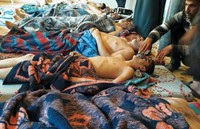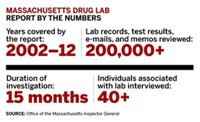Advertisement
Grab your lab coat. Let's get started
Welcome!
Welcome!
Create an account below to get 6 C&EN articles per month, receive newsletters and more - all free.
It seems this is your first time logging in online. Please enter the following information to continue.
As an ACS member you automatically get access to this site. All we need is few more details to create your reading experience.
Not you? Sign in with a different account.
Not you? Sign in with a different account.
ERROR 1
ERROR 1
ERROR 2
ERROR 2
ERROR 2
ERROR 2
ERROR 2
Password and Confirm password must match.
If you have an ACS member number, please enter it here so we can link this account to your membership. (optional)
ERROR 2
ACS values your privacy. By submitting your information, you are gaining access to C&EN and subscribing to our weekly newsletter. We use the information you provide to make your reading experience better, and we will never sell your data to third party members.
Policy
Uncertainty Plagues Anthrax Probe
Investigation: Molecular techniques don't identify the source of anthrax used in 2001 attacks, NRC report says
by William G. Schulz
February 21, 2011
| A version of this story appeared in
Volume 89, Issue 8

Science alone does not pinpoint the source of the anthrax used in a string of deadly bioterrorism attacks launched via the U.S. mail in 2001, concludes an expert committee of the National Research Council (NRC) in a report released on Feb. 15 in Washington, D.C.
On the same day, Rep. Rush Holt (D-N.J.) reintroduced the Anthrax Attacks Investigation Act that would establish a congressional investigation of the FBI's work and consider a wider scope of evidence than did the NRC committee, which was limited to a review of the scientific work that traced the origins of the anthrax to a flask under the control of government biodefense researcher Bruce E. Ivins. The anthrax mailings themselves originated from a postal box in Holt's central New Jersey district.
While it casts doubt, the carefully worded NRC report—and its stoic delivery at a press briefing the same day—avoids making any judgment about the FBI's conclusion that Ivins masterminded and carried out the attacks. Ivins killed himself once he became the chief suspect in the FBI probe. Amidst heavy criticism, the bureau closed its case against Ivins a year ago, only months after the NRC committee began its work (C&EN Latest News, Feb. 23, 2010).
"We will not offer any view on the guilt or innocence of any person," committee chair Alice P. Gast, a physical chemist who is also president of Lehigh University, said at the press briefing, echoing previous statements. She said the committee did not review any other forensic evidence developed by the FBI, focusing solely on the molecular techniques the FBI used to identify and characterize the spores and then trace their origin. On that basis, the committee could not rule out other sources of the anthrax used in the attacks.
"The NAS report makes clear there are still questions to be answered and still lessons to be learned about the FBI's investigation into the attacks," Holt said in a statement. "It would take a credulous person to believe the circumstantial evidence that the FBI used to draw its conclusions with such certainty."
In response to the report, the FBI notes that "the scientific findings in this case provided investigators with valuable investigative leads." The bureau says it was the totality of evidence gathered, however, that led to its ultimate conclusion about Ivins.




Join the conversation
Contact the reporter
Submit a Letter to the Editor for publication
Engage with us on Twitter